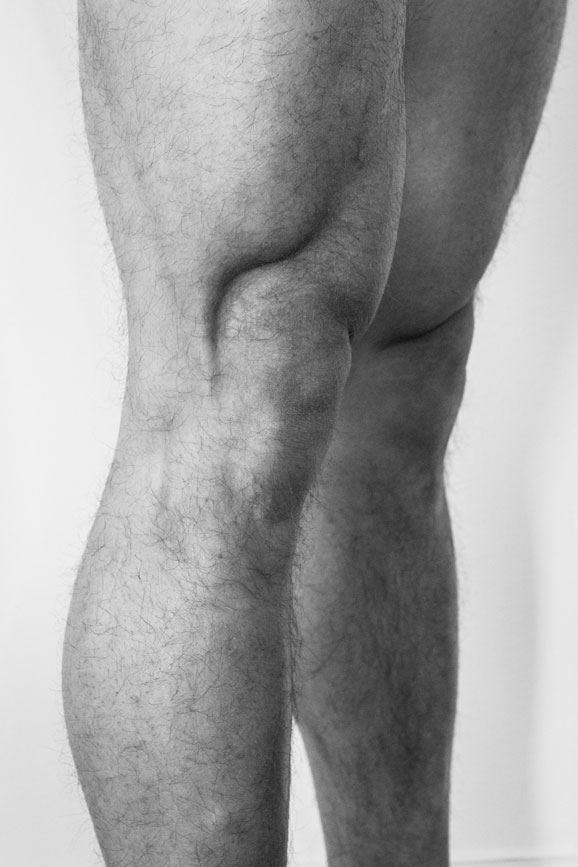Table of Contents
- Written By Sam Fell (Physiotherapist)
- Last Updated On 15 June 2023
Physiotherapy for Sciatica
Sciatica, a common yet perplexing condition, can send waves of excruciating pain radiating down the leg, disrupting daily life and mobility. But what exactly is sciatica? Why does it occur, and how can it be managed effectively?
In this article, we explore these questions and shed light on topics like what causes sciatica, sciatica pain symptoms, best treatment for sciatica and the benefits of physiotherapy for sciatica.
From exploring the anatomy of the sciatic nerve to delving into the factors that contribute to its irritation, we aim to provide a comprehensive understanding of this condition. Whether you’re seeking relief or seeking knowledge, join us as we learn about sciatica and how physiotherapy for sciatica can help you overcome its grip on your life.
What is Sciatica?
Sciatica refers to radiating pain along the course of the sciatic nerve from the lower back or buttock to one or both legs. It occurs when the sciatic nerve becomes compressed or irritated, typically due to a herniated disc, bone spur, or narrowing of the spinal canal (spinal stenosis).
The pain experienced with sciatica can vary in intensity, ranging from mild discomfort to severe, sharp, or burning sensations. In addition to pain, individuals with sciatica may also experience numbness, tingling, or weakness in the affected leg.
Sciatica can significantly impact mobility and daily activities, requiring appropriate diagnosis and treatment for effective management.
Sciatica Pain Symptoms – What does sciatica pain feel like?
Sciatica pain can translate to several types:
- Radiating pain: The hallmark symptom of sciatica is pain that radiates from the lower back through the buttocks and down the back of one leg. The pain in the buttocks and lower back may extend all the way to the foot or may be localized to certain areas along the path of the sciatic nerve.
- Sharp or shooting pain: Sciatica pain is often described as a sharp, shooting, or electric-like sensation. It can be intense and may worsen with movements like coughing, sneezing, or prolonged sitting or standing.
- Numbness and tingling: Along with pain, individuals with sciatica may experience numbness or tingling sensations in the buttocks, leg, or foot. This can be accompanied by a feeling of pins and needles.
- Muscle weakness: In some cases, sciatica can lead to muscle weakness in the affected leg, making it difficult to walk, stand, or perform certain movements.
- Pain on one side of the body: Sciatica pain typically affects only one side of the body, although it is possible for both sides to be affected in rare cases.
Think you may have sciatica? Consult one of our expert physios for a complete diagnosis based on your symptoms.
What Causes Sciatica Pain?
Sciatica is primarily caused by compression or irritation of the sciatic nerve. Several conditions and factors can contribute to the development of sciatica, including:
- Herniated Disc: A herniated or slipped disc occurs when the inner core of a spinal disc protrudes through the outer layer, pressing against the sciatic nerve roots.
- Spinal Stenosis: This condition involves the narrowing of the spinal canal, which puts pressure on the nerve roots, including the sciatic nerve.
- Degenerative Disc Disease: With age, the spinal discs may naturally degenerate, losing their cushioning properties and leading to nerve compression.
- Spondylolisthesis: This condition occurs when a vertebra slips out of place and compresses the nerves, including the sciatic nerve.
- Piriformis Syndrome: The piriformis muscle, located in the buttocks, can sometimes tighten or spasm, irritating the sciatic nerve that runs beneath or through it. This particular presentation is very rare.
- Injury or Trauma: Accidents, falls, or injuries to the spine or buttocks can cause inflammation or compression of the sciatic nerve.
- Pregnancy: The added weight and changes in posture during pregnancy can exert pressure on the sciatic nerve, leading to sciatica. However, this is rare.
Additionally, lifestyle factors like poor movement mechanics, training overload beyond capacity, sedentary lifestyle, obesity, and stress can also contribute to the development of sciatica. A healthcare professional can provide a comprehensive evaluation to determine what causes sciatica in individual cases.
If you currently feel you might have sciatica, consult a physiotherapist at Pro-Form today.
At Pro-Form, when you come in with pain or discomfort of any sort, we take utmost care to assess the reason behind the pain and recommend treatment options pertaining to the condition you may be dealing with.
Best Treatment For Sciatica
The best treatment for sciatica usually depends and varies on the underlying sciatica causes and the severity of symptoms. It’s essential to consult with a healthcare professional for an accurate diagnosis and to determine the most appropriate treatment approach.
Nevertheless, here are some common treatments for sciatica:
- Physiotherapy: A tailored exercise program prescribed by a physiotherapist can help strengthen the muscles, improve flexibility, and alleviate sciatica pain symptoms. Physiotherapy for sciatica may include specific stretches, core exercises, and low-impact aerobic activities.
- Heat and Cold Therapy: Applying heat or cold packs to the affected area can help reduce pain and inflammation. Heat therapy can help relax muscles, while cold therapy can numb the area and reduce swelling.
- Pain Medication: Over-the-counter nonsteroidal anti-inflammatory drugs (NSAIDs) can help alleviate pain and reduce inflammation. In more severe cases, prescription medications may be recommended.
- Alternative Therapies: Techniques such as chiropractic adjustments, acupuncture, and massage therapy may offer relief for some individuals, though the evidence supporting their effectiveness varies.
- Epidural Steroid Injections: In some cases, corticosteroid injections may be administered directly into the affected area to reduce inflammation and provide temporary sciatica pain relief.
- Surgery: Surgery is generally considered a last resort and is reserved for severe cases where conservative treatments have not been effective, or when there is a specific structural problem that requires intervention (e.g., herniated disc pressing on the nerve).
The best treatment for sciatica is typically individualized and may involve a combination of the above methods. At Pro-Form, we take a holistic approach and work closely with you to develop a comprehensive treatment plan custom made to your specific symptoms and circumstances to help alleviate sciatica pain.
Physiotherapy For Sciatica – What You Can Expect
Physiotherapy plays a vital role in the management of sciatica pain by addressing its underlying causes, promoting healing, and improving overall function.
When you consult with Pro-Form physiotherapy for sciatica pain, here’s what our approach to treatment may look like:
- Pain Relief: We believe no one deserves to live with pain. Our team of skilled physios employ various techniques, such as manual therapy, to reduce pain and muscle tension associated with sciatica. Manual therapy techniques, including joint mobilization and soft tissue mobilization are shown to help alleviate pressure on the sciatic nerve and promote relaxation of affected muscles.
- Exercise Prescription: Next, we would work with you to design specific exercise programs to strengthen your core, improve flexibility, and correct your posture. These strengthening exercises would target the muscles that support the spine, helping them to stabilize the affected area and reduce pressure on the sciatic nerve. Flexibility exercises will aim to increase the range of motion and reduce muscle tightness that may contribute to nerve compression.
- Posture and Body Mechanics Education: Poor posture and improper body mechanics can aggravate sciatica pain symptoms. At Pro-Form, in addition to treatment, we take delight in educating all our patients on proper posture techniques during various activities and provide guidance on ergonomics to minimize strain on the back.
- Functional Rehabilitation: We want to be with you every step of your recovery journey and eventually see you return to activities you love doing without pain. We focus on functional rehabilitation, and guide you through performing specific movements and tasks that mimic real-life situations, thus, helping you restore your strength, flexibility, and confidence.
- Education and Self-Management: We don’t want to see you relapse and hence we take time to educate you thoroughly about sciatica causes and symptoms. We provide you with guidance on pain management strategies, self-care techniques, and preventive measures to decrease the risk of future flare-ups.
- Lifestyle Modification: Lastly, if your sciatica is caused by lifestyle factors, we may recommend certain lifestyle modifications, such as adding regular physical activity to your day, maintaining a healthy weight, and implementing ergonomic changes in the workplace or daily routines to help you with long-term management of sciatica.
By combining these approaches, physiotherapy for sciatica aims to reduce pain, improve function, enhance quality of life, and prevent future episodes of the pain.
For all of our patients, we ensure that sciatia physiotherapy programs are tailored to suit every individual’s specific needs. Chat to one of our team to learn more about how we can help you accelerate your recovery today!
Frequently Asked Questions on Physiotherapy For Sciatica
Sciatica pain is characterized by a shooting pain that radiates from the lower back down one leg. Numbness, tingling, or weakness in the leg might accompany the pain. If you’re experiencing these symptoms, it’s advisable to consult a medical professional for proper diagnosis and guidance.
Yes, walking can be beneficial for sciatica. It promotes blood circulation, which can help reduce inflammation and alleviate the pain. Start with gentle walks and gradually increase intensity as your comfort level allows. However, it’s essential to consult your healthcare provider before beginning any exercise routine, especially if you’re dealing with sciatica.
Sciatica pain can sometimes resolve on its own, but it’s important to note that the timeline for recovery varies from person to person. Professional guidance ensures appropriate management and minimizes the risk of recurrence. If you’re experiencing sciatica pain, it’s advisable to consult a healthcare professional for proper diagnosis and treatment recommendations tailored to your situation.
Gentle exercise is generally more beneficial than prolonged rest for managing sciatica. Engaging in specific exercises can help alleviate pain, improve flexibility, and strengthen the muscles supporting your spine. However, it’s crucial to consult a healthcare provider before starting any exercise regimen to ensure that the chosen exercises are safe and suitable for your condition. They can guide you on the right balance between rest and activity.
For immediate relief from sciatica pain, you can try the following:
1. Stretching: Gently stretch the affected leg by lying on your back and bringing your knee towards your chest. Hold for 20-30 seconds and switch sides.
2. Heat or Cold: Applying a hot or cold pack to the affected area can help reduce inflammation and soothe the pain.
3. Good Posture: Maintain proper posture to relieve pressure on the sciatic nerve. Avoid sitting or standing for long periods.
4. Over-the-Counter Pain Relievers: Non-prescription pain relievers like ibuprofen can temporarily alleviate discomfort.
5. Consult a Doctor: If pain persists, consult a healthcare professional for tailored advice and treatment options.
Experiencing pain in the buttocks and lower back can have various causes, including sciatica, muscle strain, or other underlying issues. Here’s what you can consider:
1. Rest and Gentle Movement: Avoid activities that exacerbate the pain, but don’t stay completely immobile. Gentle stretches and movements may help.
2. Heat or Cold Therapy: Apply a heat pack or cold compress to the affected area to alleviate discomfort.
3. Pain Relief Measures: Over-the-counter pain relievers can provide temporary relief. Follow dosage instructions.
4. Consult a Healthcare Professional: If the pain persists or worsens, seek medical advice. A doctor can diagnose the cause and recommend appropriate treatment, exercises, or therapies.
Remember, it’s important to get a professional medical evaluation for a proper diagnosis and personalized treatment plan.
Untreated sciatica can lead to chronic pain, nerve damage, muscle weakness, mobility limitations, and potential impacts on spine health. Early medical intervention is crucial to prevent these complications and ensure effective management of the condition.




